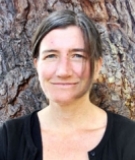Goal 4: Secure Human Rights for River Communities and Water Protectors
For the next week, we'll be exploring the six goals that will guide our work for the next five years, as part of the launch of our new Strategic Plan. Read the whole series!
In recent years, the silencing, disappearance and assassination of environmental and indigenous defenders has become tragically common.
Perhaps the most high-profile case involves Berta Caceres, our friend and partner who was gunned down in her own home in Honduras for her opposition to the Agua Zarca Dam on the Gualcuarque River, which is sacred to Caceres’ indigenous Lenca people.
But the violence is not confined to one country. On average, three people are killed every week defending their land, forests and waterways against the expansion of large-scale agriculture, dams, mining, logging and other threats.[i]
In countries where human rights abuses are rife, indigenous and local communities face enormous risks when they stand up to the powerful interests behind proposed infrastructure and extractive projects. River protectors, in particular, routinely come under threat for their opposition to large hydropower projects.
These attacks are particularly egregious in Central and South America, but they also severely impact people’s rights to organize and speak out in many parts of Asia and Africa. In 2015, at least 185 activists were killed, 15 of whom were involved in activism related to hydroelectric dams.[ii]
And death is only one extreme on the spectrum of threats that river defenders face. At the individual level, people are contending with the loss of their homes, lands and livelihoods. Community members who stand in the way of hydropower development risk violence or arrest. At the collective level, communities are facing forced displacement as developers proceed with hydropower projects, never consulting or gaining consent from local communities. Human rights violations in the hydropower sector disproportionately impact indigenous peoples.[iii]
This situation cannot stand. Our freshwater resources are becoming ever more important (and threatened) in an era of climate change and environmental disruption. Healthy rivers -- and the intact river communities they support -- are one of our best defenses against climate change. These environmental defenders are not just fighting for their own communities -- they’re fighting for all of us. We owe it to them to make the world safe for their courageous work.
In the next five years, we’ll work to document and monitor projects where rights violations are occurring. We’ll work with the hydropower sector and governments to improve their practices and bolster respect human rights. We’ll support project-affected people seeking redress for human rights impacts. We’ll work to strengthen national, regional and international instruments for human rights protections.
It’s a tall order, but the stakes are high. We must ensure rights for frontline communities defending their waters, lands, lives and livelihoods, and make sure they can speak out without fear of violence, jail or retribution. Our future depends on it.
By 2022, communities whose livelihoods are affected by water infrastructure will have meaningful avenues for advocacy, redress for harm and options for renewing their livelihoods. By 2022, water protectors who fight destructive projects, speak out about abuse and expose impacts will be able to do so without fear of threat or repercussions.
[i] Global Witness, On dangerous ground, Global Witness, London, 2016.
[ii] Global Witness, ibid., p. 4.
[iii] See for example J Vidal, ‘Hydroelectric dams pose threat to tribal peoples, report warns’, The Guardian, 9 August 2010, viewed 17 May 2017, and World Commission on Dams (WCD), Dams and development: a new framework for decision making, WCD, London, 2000.




